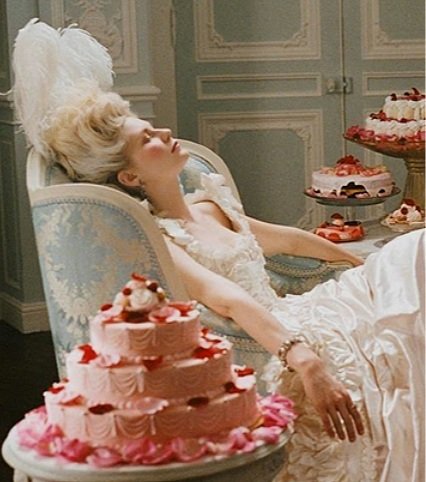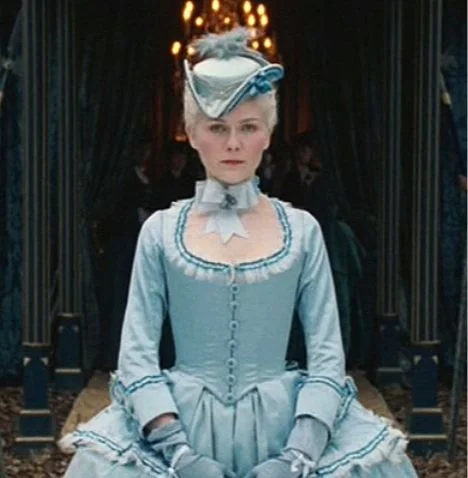The Tragedy of Girlhood: The Story Slipping Through the Seams
Sofia Coppola has bestowed upon us cult classics about the tragedy of girlhood for decades. Movies like The Virgin Suicides, The Bling Ring, and Lost in Translation are only a few honourable mentions in Coppola's repertoire. Regardless of these hidden gems, the real stars of this show are two of history’s most misunderstood ladies, Marie Antoinette, played by Kristen Dunst, and Priscilla, played by exciting newcomer Cailee Spaeny.
Coppola had said that young Priscilla Presley and the late French Queen, Marie Antoinette, follow the same tragic storyline: two young girls both searching for freedom inside their lustrous cages.
The story of Marie Antoinette begins with her arrival in France at age 14 and ends with her tragic death at age 37. Priscilla begins with her, also aged 14, meeting Elvis for the first time and ends with their divorce at age 28. Although both storylines span over a decade, the actresses are never changed; their innocence, as well as their maturity, is shown in their style.
The style progressions of the characters seem to be their own parallel plot, changing alongside the leading ladies. One can pinpoint, scene by scene, the eerie similarities. Towards the beginning of both films, the moment the veil of glamour is lifted and reality strikes is shown in the brilliant acting of the starlets and, most importantly, in their style. For Marie Antoinette, this is when she realizes her dreams of the French court would be nothing but a nightmare. Kirsten Dunst’s face, here, shows nothing but disappointment, while her French-style blue silk gown erases any trace of her Austrian past and ages her into a woman. For Priscilla, this moment is her shopping spree with Elvis, where her clothes, hair, and makeup erase the look of a young girl while maintaining her childish innocence.
Notably, also are the wedding dresses of the young women. The marriages of the women to their kings symbolize more than a union of hearts but a consolidation of power and influence. This is evident in their wedding dresses. Marie Antoinette sports a gorgeous white gown, complete with French makeup and hair, embodying the richness and significance of her position as French queen. Priscilla sports a loosely fitted conservative dress, as requested by Elvis, to solidify her position as his wife and everything he believes to look like.
As their storyline progresses and the ladies mature, so does their style. Marie Antoinette embraces the grandeur of the French court as her gowns get more and more extravagant. She embraces every expectation placed on her and always manages to upstage it, not as a sign of weakness but as a way of reclaiming power. This is reflected in her larger and larger wings and her larger and larger ball gowns. As for Priscilla, as Elvis becomes more infatuated with stardom and less infatuated with her, she begins to form an identity free of influence from Elvis. This can be seen quite clearly towards the end. Her hair returns to a more natural brunette, the makeup around her eyes lessens, her outfits lose the rock-star’s-wife flair, and gains a mature and sophisticated look, embracing her role as a mother finding a new person to centre her life around.
The stories of the women end on a similar note: with a drive; for the late French queen, it will be for facing the end of her life, while for Priscilla, it will be facing the beginning of it. The last similarity is seen here in the outfits they wear. Marie Antoinette returns to the same blue silk gown she first wore upon her arrival to France, showing the completion of her journey. Although the gown is the same, the woman wearing it is completely different. The gown is paired with deep dark circles under her eyes and birds-nest hair. For Priscilla, there is a return to her natural red hair and her light airy makeup. For her, this is a return to her roots, and a way of reclaiming an identity untouched by others, only for herself.
The script, the set design, and the actors are all factors which require immense talent to perfect. But the implication of fashion as a driving force calls for an unmatched level of mastery. Sofia Coppola uses something as simple as clothing to morph her characters, an art few venture to pursue. If Marie Antoinette and Priscilla can teach us anything, it’s that clothes can only make a person if they are given that power, but it should be the person who makes the clothes



